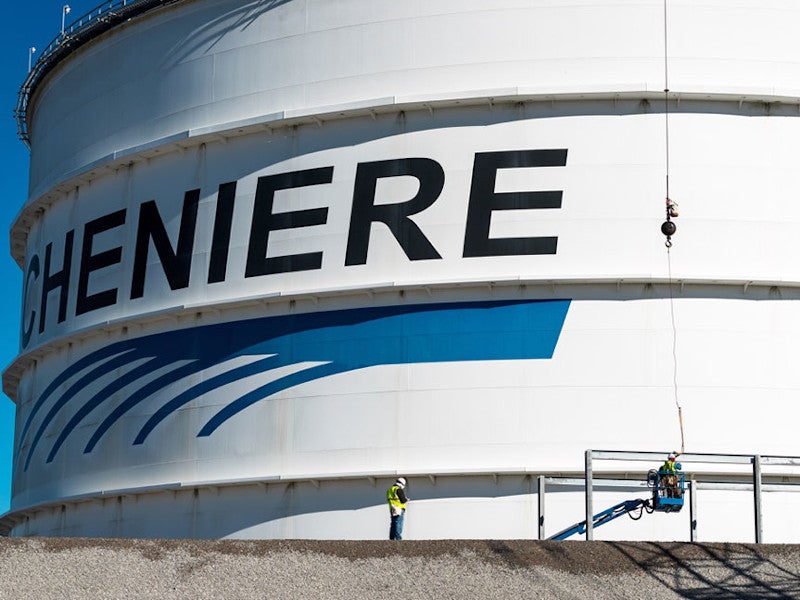The Sabine Pass LNG export terminal located in Cameron Parish, Louisiana, US is being expanded to add the sixth liquefaction train. Scheduled for commissioning in 2023, the new unit will increase the facility’s total LNG export capacity to 27 million tonnes per annum (Mtpa).
Owned and operated by Cheniere Energy, the Sabine Pass site was previously developed as an LNG import and regasification facility that entered service in 2008.
Cheniere Energy that also operates the Corpus Christi LNG export terminal in Texas decided to convert the Sabine Pass import terminal into a natural gas liquefaction and export facility in 2012, because of the surge in US sale gas production.
The first 4.5Mtpa capacity liquefaction train at the facility was commissioned in May 2016, followed by the commissioning of four more similar capacity LNG units in October 2016, March 2017, October 2017 and March 2019.
The final investment decision (FID) for the sixth LNG train at Sabine Pass was reached in May 2019.
Location and site details
The Sabine Pass LNG export terminal is located in Cameron Parish, Louisiana, on the coast of the Gulf of Mexico.
The project site covers a total area of more than 1,000 acres along the Sabine Pass River on the border of Texas and Louisiana, approximately 6.8km away from the open water.
Sabine Pass LNG facility make-up
The existing Sabine pass LNG processing and export facility comprises five 4.5Mtpa liquefaction trains, five LNG tanks with a total storage capacity of 17 billion cubic feet (bcf), and two marine berths for loading LNG vessels.
Expansion details
The Sabine Pass LNG export terminal expansion includes a 4.5Mtpa capacity sixth train as well as the development of a third LNG berth along with supporting infrastructure at the facility.
To be built with four breasting and six mooring dolphins, the third marine berth will be capable of accommodating large LNG carriers with up to 200,000m3 capacity.
Cheniere Energy secured credit facilities worth £1.18bn ($1.5bn) from a group of 29 banks and financial institutions for the on-going expansion project at the facility in May 2019.
Liquefaction technology
The Sabine Pass LNG export facility uses ConocoPhillips Optimized Cascade® liquefaction process technology for each of its operational units.
Each train is equipped with six refrigerant compressors that are driven by GE LM2500+G4 annular combustor aero-derivative gas turbines of 34.7MW rated capacity each.
Feed-gas supply
The Sabine Pass LNG export terminal is connected to the 151km-long Creole Trail pipeline which has been reconfigured for bi-directional flow.
The LNG facility is interconnected with multiple interstate and intrastate pipeline systems to receive gas supply from the shale gas plays in Louisiana and Texas.
The interconnected pipeline systems include Natural Gas Pipeline Company of America, Transcontinental Gas Pipeline Corporation (Transco), Tennessee Gas Pipeline Company, Florida Gas Transmission Company, Bridgeline Holdings, Texas Eastern Gas Transmission (TETCO), and Trunkline Gas Company (Trunkline).
LNG off-take from Sabine Pass
The long-term sales and purchase agreements (SPAs) account for more than 20Mtpa of LNG production capacity of the Sabine Pass facility.
The major third-party customers for the project include Shell, Naturgy, KOGAS, GAIL, Total, Centrica, PETRONAS, and Vitol.
Contractors involved
Bechtel was the engineering, procurement and construction (EPC) contractor for the existing five liquefaction trains at the facility, while General Electric (GE) was the supplier of gas turbines and refrigerant compressors.
Bechtel was also issued a full notice to proceed with the construction of the sixth LNG train at the facility in June 2019.





